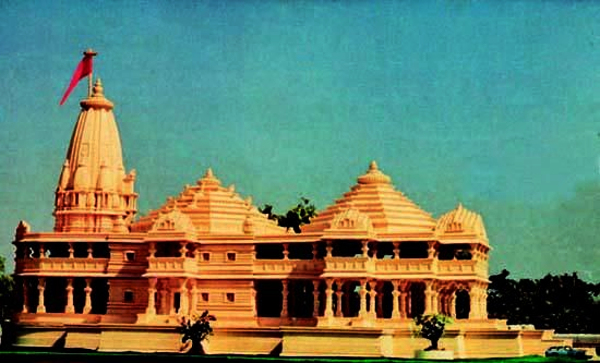Every ram Navami, sun rays will fall inside the sanctum sanctorum of the under-construction Ram Temple in Ayodhya, a member of the Sri Ram Janmabhoomi Tirath Kshetra Trust told PTI explaining how a model is being planned in consultation with scientists, astronomers and other technical experts to build the Ram Temple in such a way. The design will be inspired by Konark’s Sun Temple, the report said. “The Sun temple at Konark in Odisha is an example where the sun rays reach inside the temple. In such a situation, all the technical aspects and state-of-the-art technology are being considered regarding how the rays of the sun reach the sanctum (of Ram temple),” Kameshwar Choupal told PTI.
As efforts are on to throw open the main temple for visitors by December 2023, work is going on at a fast pace. The first phase of the foundation has been already completed and the second phase will be over by mid-November.
A committee consisting of experts from the National Institute of Building Construction, including Indian Institute of Technology (IIT) Delhi, IIT Mumbai, and IIT Roorkee, has been brainstorming on the technical aspects related to the construction of the temple. The geological, geographical and ecological conditions are being taken into consideration, the report said.
“From November 15, the work of construction of the plinth (the base part of the pillar) will also start. The construction of pillars and overhead structure on the plinth is expected to start from April 2022,” the member said.
Instead of two floors planned initially, three floors will be constructed. The member told the news agency that the temple will have a museum, archives room, research centre, auditorium, gaushala, tourist centre, administrative building, yoga centre and other facilities.
The earthquake-prone nature of the area and the vicinity of a river are also being kept in mind, while the entire area comes under the Himalayan region.
The temple will display the bricks which were donated between 1987 and 1989, during the Ram Mandir movement. “Bricks will not be used in the construction of Ram Mandir as they are not durable. But the shilas (bricks) donated by devotees during the Ram Mandir movement are of immense importance for us. They are likely to be preserved and displayed at Ram Janmabhoomi,” a Trust member said earlier.
The structure of the upcoming Ram temple in Ayodhya would have a minimum life of 1,000 years as the Trust is aiming at an engineering marvel.
Source: HT
You may also like
-
India Can’t Afford to Remain Stagnant at this Juncture, Says PM Modi; Asks People to Buy Locally-Made Goods
-
Stolen Artefacts to be Returned to India from Scotland Museums
-
Netaji’s Hologram Statue at India Gate
-
10th Century Stone Idol of Goat Head Yogini IllegallyRemoved from A Temple in Lokhari, Banda, UP Being Returned to India
-
UNESCO Inscribes ‘Durga Puja in Kolkata’ on the Representative List of Intangible Cultural Heritage of Humanity
